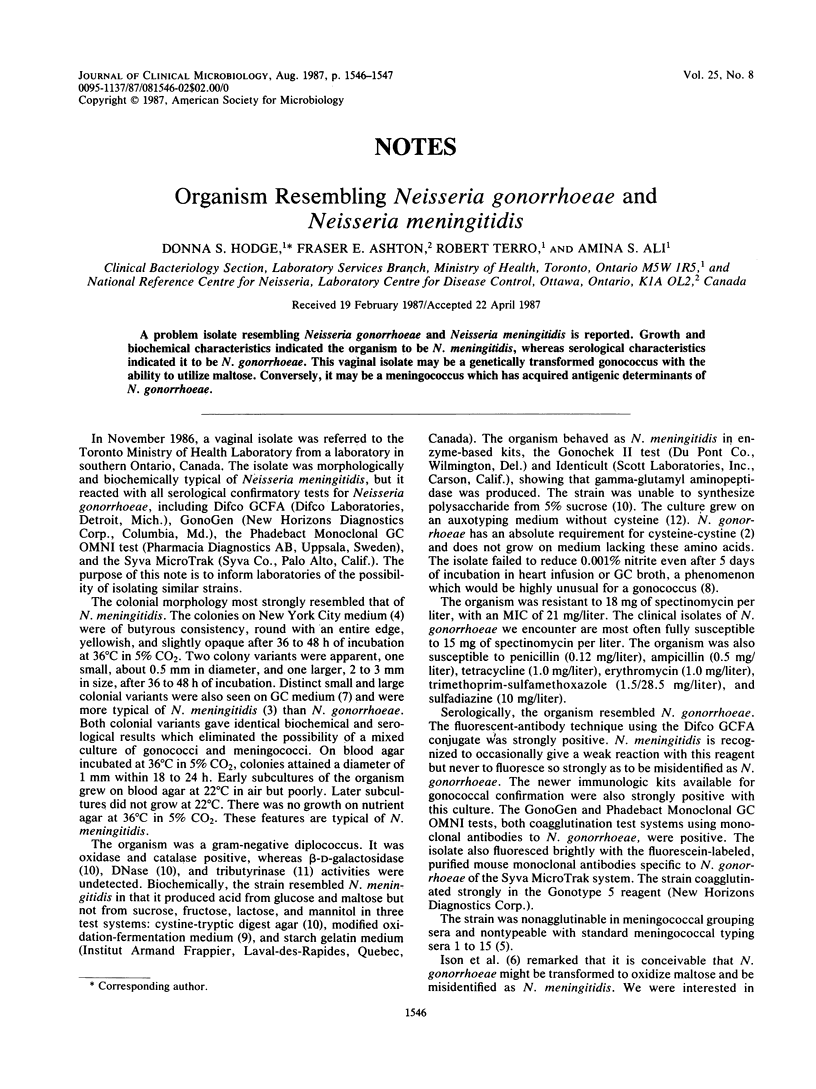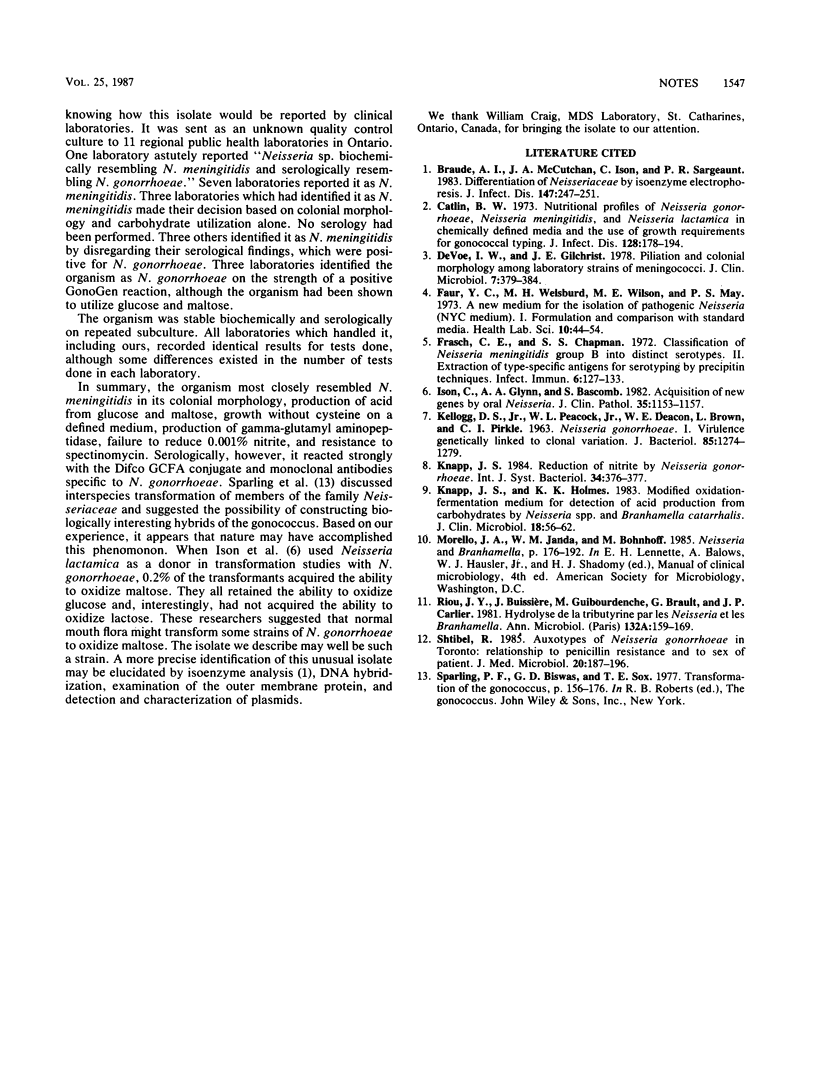Abstract
A problem isolate resembling Neisseria gonorrhoeae and Neisseria meningitidis is reported. Growth and biochemical characteristics indicated the organism to be N. meningitidis, whereas serological characteristics indicated it to be N. gonorrhoeae. This vaginal isolate may be a genetically transformed gonococcus with the ability to utilize maltose. Conversely, it may be a meningococcus which has acquired antigenic determinants of N. gonorrhoeae.
Full text
PDF

Selected References
These references are in PubMed. This may not be the complete list of references from this article.
- Braude A. I., McCutchan J. A., Ison C., Sargeaunt P. R. Differentiation of neisseriaceae by isoenzyme electrophoresis. J Infect Dis. 1983 Feb;147(2):247–251. doi: 10.1093/infdis/147.2.247. [DOI] [PubMed] [Google Scholar]
- Catlin B. W. Nutritional profiles of Neisseria gonorrhoeae, Neisseria meningitidis, and Neisseria lactamica in chemically defined media and the use of growth requirements for gonococcal typing. J Infect Dis. 1973 Aug;128(2):178–194. doi: 10.1093/infdis/128.2.178. [DOI] [PubMed] [Google Scholar]
- Chen H. Y., Williams J. D. Transferable resistance and aminoglycoside-modifying enzymes in enterococci. J Med Microbiol. 1985 Oct;20(2):187–196. doi: 10.1099/00222615-20-2-187. [DOI] [PubMed] [Google Scholar]
- DeVoe I. W., Gilchrist J. E. Piliation and colonial morphology among laboratory strains of meningococci. J Clin Microbiol. 1978 Apr;7(4):379–384. doi: 10.1128/jcm.7.4.379-384.1978. [DOI] [PMC free article] [PubMed] [Google Scholar]
- Faur Y. C., Weisburd M. H., Wilson M. E., May P. S. A new medium for the isolation of pathogenic Neisseria (NYC medium). I. Formulation and comparisons with standard media. Health Lab Sci. 1973 Apr;10(2):44–54. [PubMed] [Google Scholar]
- Frasch C. E., Chapman S. S. Classification of Neisseria meningitidis group B into distinct serotypes. II. Extraction of type-specific antigens for serotyping by precipitin techniques. Infect Immun. 1972 Aug;6(2):127–133. doi: 10.1128/iai.6.2.127-133.1972. [DOI] [PMC free article] [PubMed] [Google Scholar]
- Ison C., Glynn A. A., Bascomb S. Acquisition of new genes by oral Neisseria. J Clin Pathol. 1982 Oct;35(10):1153–1157. doi: 10.1136/jcp.35.10.1153. [DOI] [PMC free article] [PubMed] [Google Scholar]
- KELLOGG D. S., Jr, PEACOCK W. L., Jr, DEACON W. E., BROWN L., PIRKLE D. I. NEISSERIA GONORRHOEAE. I. VIRULENCE GENETICALLY LINKED TO CLONAL VARIATION. J Bacteriol. 1963 Jun;85:1274–1279. doi: 10.1128/jb.85.6.1274-1279.1963. [DOI] [PMC free article] [PubMed] [Google Scholar]
- Knapp J. S., Holmes K. K. Modified oxidation-fermentation medium for detection of acid production from carbohydrates by Neisseria spp. and Branhamella catarrhalis. J Clin Microbiol. 1983 Jul;18(1):56–62. doi: 10.1128/jcm.18.1.56-62.1983. [DOI] [PMC free article] [PubMed] [Google Scholar]
- Riou J. Y., Buissière J., Guibourdenche M., Brault G., Carlier J. P. Hydrolyse de la tributyrine par les Neisseria et les Branhamella. Ann Microbiol (Paris) 1981 Mar-Apr;132(2):159–169. [PubMed] [Google Scholar]


